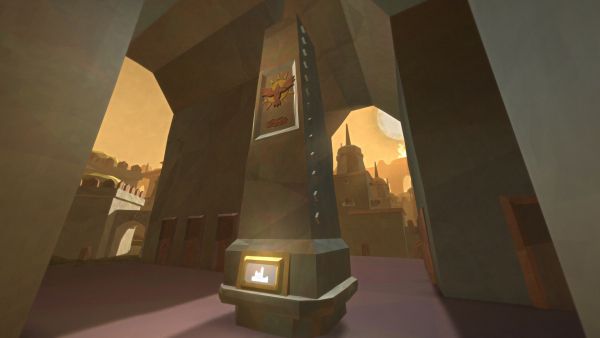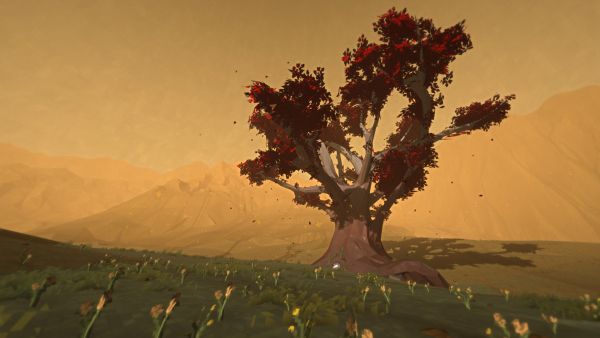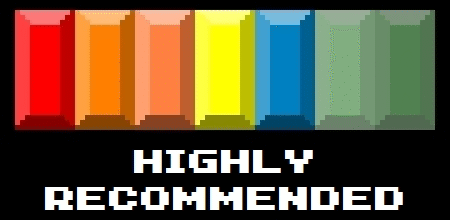
TimeFrame is a bit like Myst in that they are both calm and exploratory. It is the kind of game you can play to relax and unwind and continue to feel that way when you stop playing. Instead of a game where one might seek catharsis through lots of action, TimeFrame sets you on a thoughtful journey through a doomed society, as you’re given ten minutes to explore the last ten seconds of a world. It’s simple in its presentation, but TimeFrame features a lot of little details that make every ten-minute playthrough worthwhile.
Platforms: PC
Publisher: Random Seed Games
Developer: Random Seed Games
Genre: First-Person History Lesson of a Futuristic Society
Release Date: July 7, 2015
ESRB Rating: Not Rated
 Something new about TimeFrame strikes me every time I sit down to play it. I love it for the fact that I can walk away for a day or two and then come back to the same familiar starting point, but get a new experience. You start in the base of a tower with one plaque in it you can read. There are several other pedestals around the room with symbols on them. You can move around with arrow keys and look with the mouse. The plaque in the starting room indicates that you’re experiencing the last recorded moments of a civilization. There are the same number of plaques spread around the game world as pedestals in the starting room. Each plaque is placed at a monument of some type and gives you a little more information about this dying world.
Something new about TimeFrame strikes me every time I sit down to play it. I love it for the fact that I can walk away for a day or two and then come back to the same familiar starting point, but get a new experience. You start in the base of a tower with one plaque in it you can read. There are several other pedestals around the room with symbols on them. You can move around with arrow keys and look with the mouse. The plaque in the starting room indicates that you’re experiencing the last recorded moments of a civilization. There are the same number of plaques spread around the game world as pedestals in the starting room. Each plaque is placed at a monument of some type and gives you a little more information about this dying world.
As you navigate out of the tower, you have no real indication of what to do. You do see a natural landscape with man-made objects in the distance. As one might, I moved towards the closest object. While navigating towards this monument, I instinctually tapped the space bar to jump as I moved. It’s just something that has become second nature when moving with WASD. It turns out that holding the space bar down actually brings up a simple map The map is very plain looking with a symbol for the tower in the middle of a series of dots arranged in the shape of an infinity symbol..
The map didn’t really make sense until I reached the first monument and read the plaque there. The plaque also had a symbol on it. The next time I pulled up the map, there was the symbol from the monument in a relative location to the starting tower. I then realized that I had an objective: I had to find every monument on the map and, from there, read every plaque to learn as much as I could about the history of these people.

Each play session gives you roughly enough time to visit two monuments. Some players might be able to do this faster, but the developers were quite keen to add little details to the game that keep you from necessarily wanting to rush to each monument. Plenty of these details are worth mentioning, but for the sake of this review, I’m going to focus on my two favorite moments.
The first comes from running through a small valley. I wasn’t paying attention to anything except trying to head in the relative direction of monument I hadn’t been to yet. Then I noticed that I was surrounded by white and pink petals that were slowly floating through the air. I was surprised at myself for not noticing this earlier and also impressed by how beautiful that short moment was. The second moment I had involved the first monument I went to. It had running water flowing over the edge of some rocks into a pool below. Initially the water looked like it was frozen in time. Then I noticed how it was actually slowly and naturally moving. Finally I realized that this didn’t necessarily look like water, as I could easily see the triangles that made up each part of this image. Still, I had a brief second of wonder while focusing on a small fragment of the game.

TimeFrame is visually realistic, but with a deliberately low polygon count. It looks like it could have been made in the late 90s. This game is so thoughtful that I couldn’t help but think that this old look was intentional and meant to enhance the feeling that this was a simulation sent from a society from “long ago.” What better way to give the player an instant feeling that they are looking at something old, than to make the entire visual experience seem dated? I think the developers were making a visual reference from our recent 3D graphics history so that we could readily associate the game with a dated “historical” look. Aesthetically, that makes sense, and it enhances the overall experience I had in trying to do my best to respect the last wishes of a dying culture by learning about it.
I am cannot say for certain what the whole of TimeFrame is about. My best conclusion is that in TimeFrame you are exploring a digital copy of a destroyed world. This copy was sent out Voyager-style in hopes that someone would learn about who and what they were. I can imagine it as a sort of last-ditch effort to continue on, even after total annihilation. None of this is spelled out expressly in the game, so I could be completely wrong. That level of uncertainty seems to be part of the overall game. It begs to be interpreted and thought about. It is a wonderful blend of a game and a piece of art.
I won’t say how the world ends, but you will definitely spend a playthrough or two just watching the world end as music plays. And do listen to the music; it offers wonderful variations to each monument you visit.

Review Disclosure: A review copy of TimeFrame was provided by Random Seed Games for the purposes of this review.






